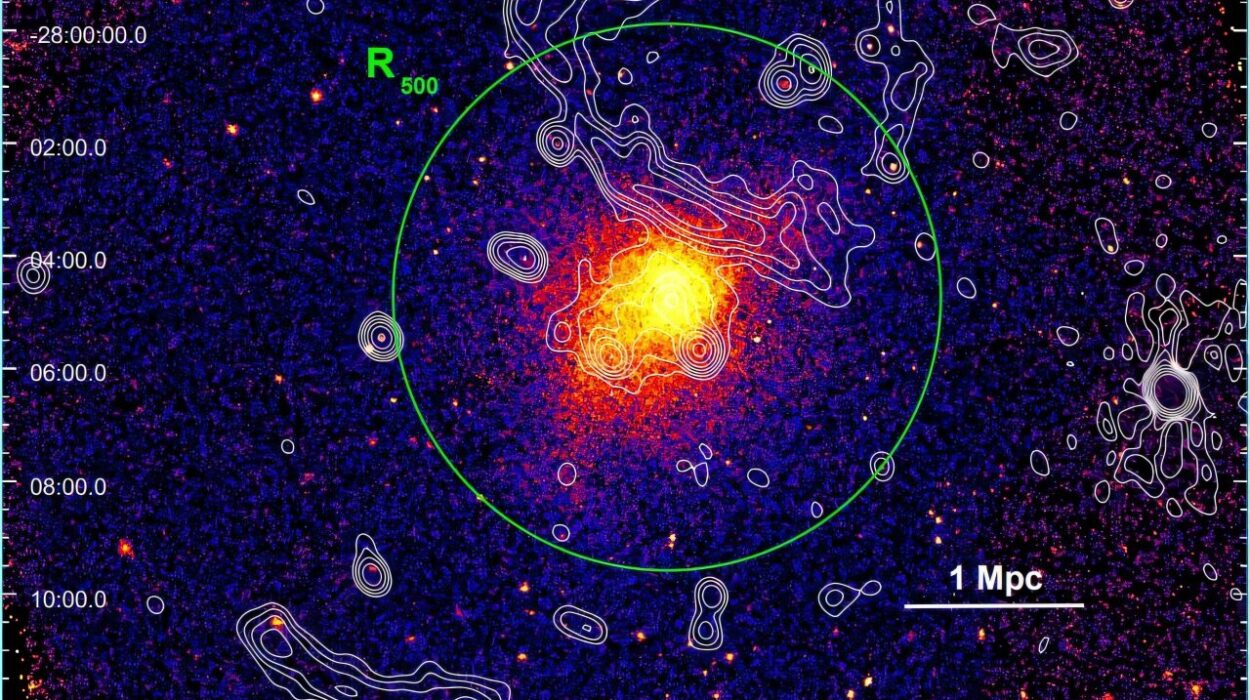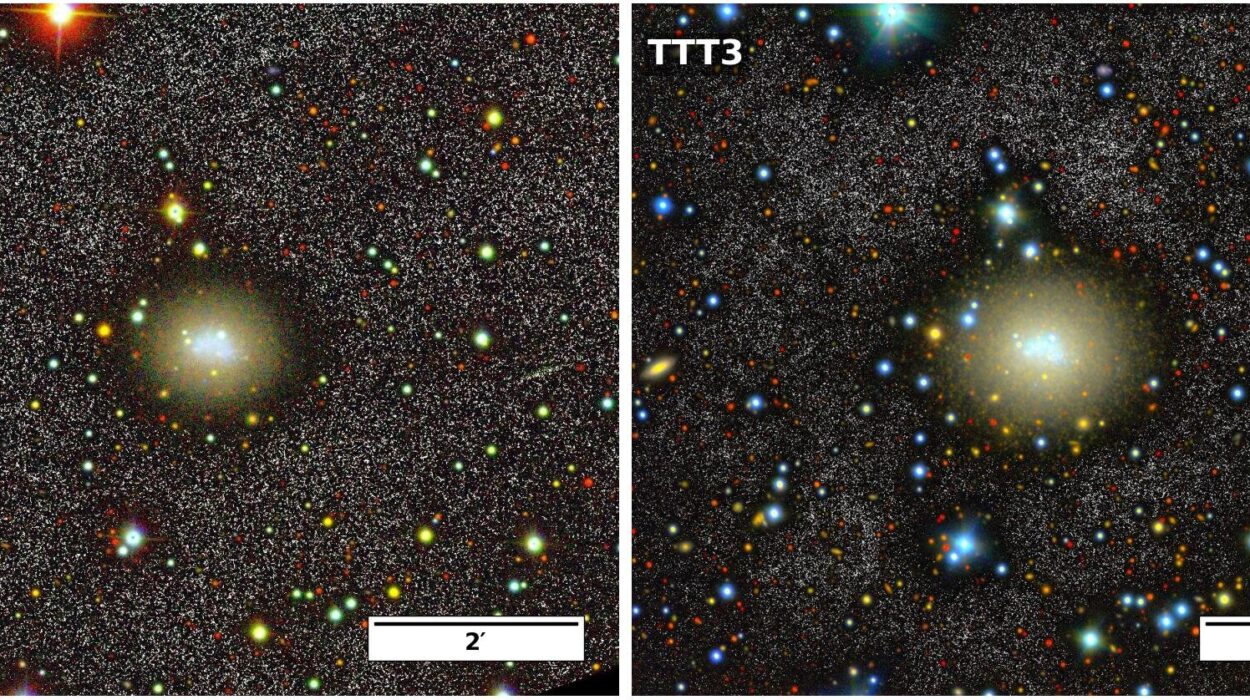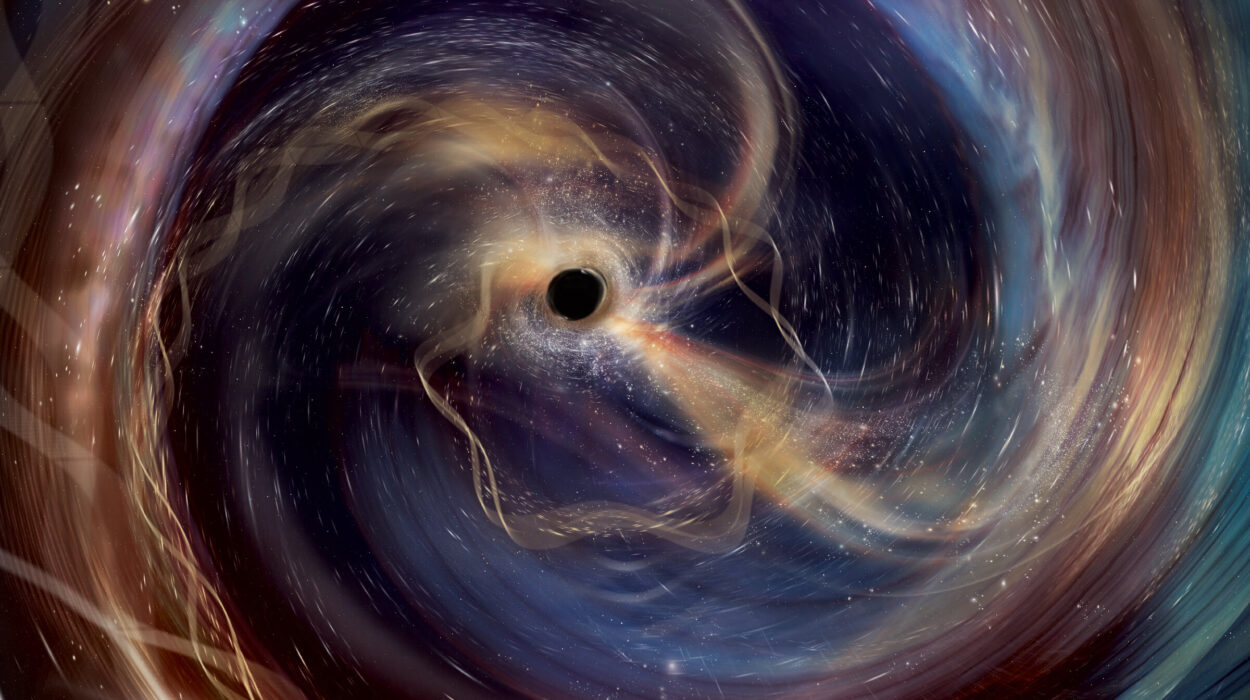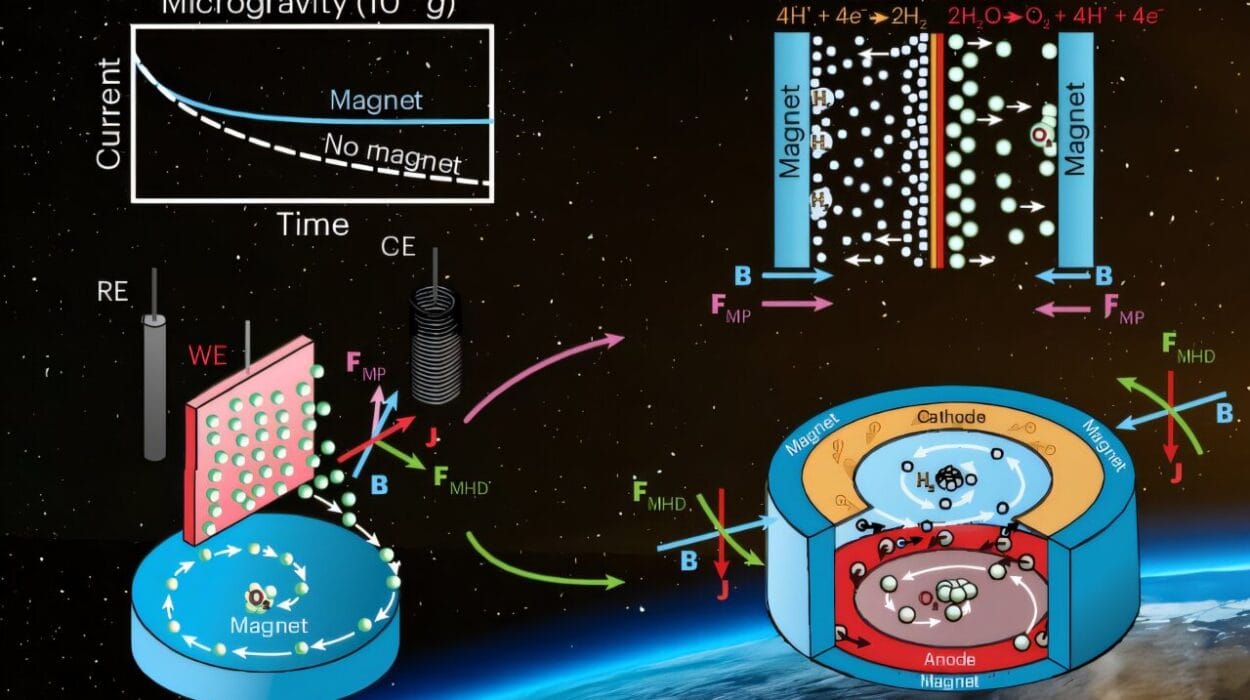Beneath Venus’s scorching clouds and hellish atmosphere lies a world that continues to surprise scientists. For decades, Venus was seen as Earth’s stagnant twin—similar in size and composition, yet seemingly geologically dormant. But now, new research breathing life into decades-old data from NASA’s Magellan mission suggests that Venus might be alive in ways we never imagined. The smoking gun? Vast, quasi-circular features scattered across the planet’s surface called coronae. These immense geological scars may be the fingerprints of tectonic forces reshaping Venus even today.
Tectonic Forces Without Tectonic Plates
Unlike Earth, which is governed by the slow drift and collision of tectonic plates floating atop a pliable mantle, Venus does not appear to have a system of mobile plates. For years, this absence was taken to mean Venus was geologically inactive—a planetary fossil. However, the planet’s surface tells another story. It’s marred by sprawling plains, vast mountain ranges, and peculiar circular features that suggest some type of internal motion.
At the heart of this new study, published in Science Advances, is a deep analysis of coronae—enormous features stretching from tens to hundreds of miles across. These are thought to be the planetary equivalent of pressure blisters, where plumes of molten material rise from Venus’s interior and push up on the brittle lithosphere, causing it to fracture and deform.
Decoding the Secrets of Coronae
The study, led by Gael Cascioli from the University of Maryland, Baltimore County, in collaboration with NASA’s Goddard Space Flight Center, taps into the most comprehensive data ever collected on Venus’s gravity and surface topography. This data came from the Magellan mission, which orbited Venus in the early 1990s. At the time, Magellan’s radar pierced through the planet’s thick, reflective clouds to produce the first detailed maps of its surface.
Cascioli and his team focused on 75 coronae and found that 52 of them bear telltale gravitational signatures of hot, buoyant mantle material lurking below. This suggests that these regions are geologically active, with processes that may closely resemble the early tectonic activity on Earth before plate tectonics took over.
“Coronae are not found on Earth today,” said Cascioli. “However, they may have existed when our planet was young and before plate tectonics had been established.”
Ancient Earth Echoes Beneath Venusian Clouds
Earth’s past may be buried under billions of years of crustal recycling, but Venus could serve as a frozen-in-time analog of our own planet’s turbulent youth. The team’s findings offer a compelling window into early Earth geology—an era when molten rock, unrestrained by plates, forced its way to the surface in dramatic fashion.
To model these events, the researchers used complex three-dimensional geodynamic simulations, comparing various scenarios of plume-induced corona formation. Gravity data turned out to be the key, revealing what topography alone could not: the presence of lighter, hotter material pushing up from below.
The variety of coronae—and the dynamics inferred from their structure—suggests that Venus’s interior is not only active, but also more complex than previously believed.
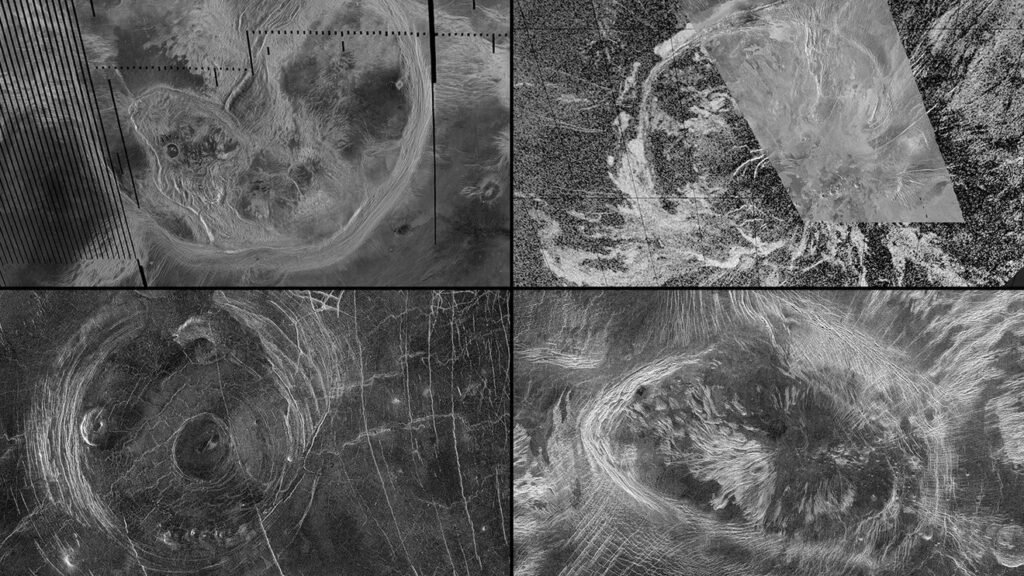
Subduction, Dripping, and Volcanism: A Planet in Motion
The geodynamic processes proposed by the researchers challenge the notion of Venus as geologically dead. The team suggests several different types of tectonic motion may be occurring beneath the coronae:
Subduction, Venus-Style
On Earth, subduction occurs where one tectonic plate is forced beneath another, often triggering earthquakes and volcanic activity. On Venus, a different kind of subduction may be happening. Here, hot mantle plumes push upward against the lithosphere, causing the crust to bulge and fracture. As the uplift spreads outward, it forces surface material downward around the corona’s perimeter—a reversal of Earth’s process, but with similar effects.
Lithospheric Dripping
In another scenario, regions of relatively dense, cooler lithosphere sink into the mantle in a process known as lithospheric dripping. This downward flow could account for the surface collapse seen in some coronae and might help explain the gravity anomalies found in Magellan data.
Plume-Driven Volcanism
The researchers also suspect that plumes of molten rock trapped beneath thicker lithosphere may be responsible for episodes of surface volcanism. This could be similar to how hotspots like Hawaii form on Earth, where stationary plumes punch through the moving crust.
Each of these processes implies that Venus is internally dynamic—and that its crust is more malleable than expected, even in the absence of plate boundaries.
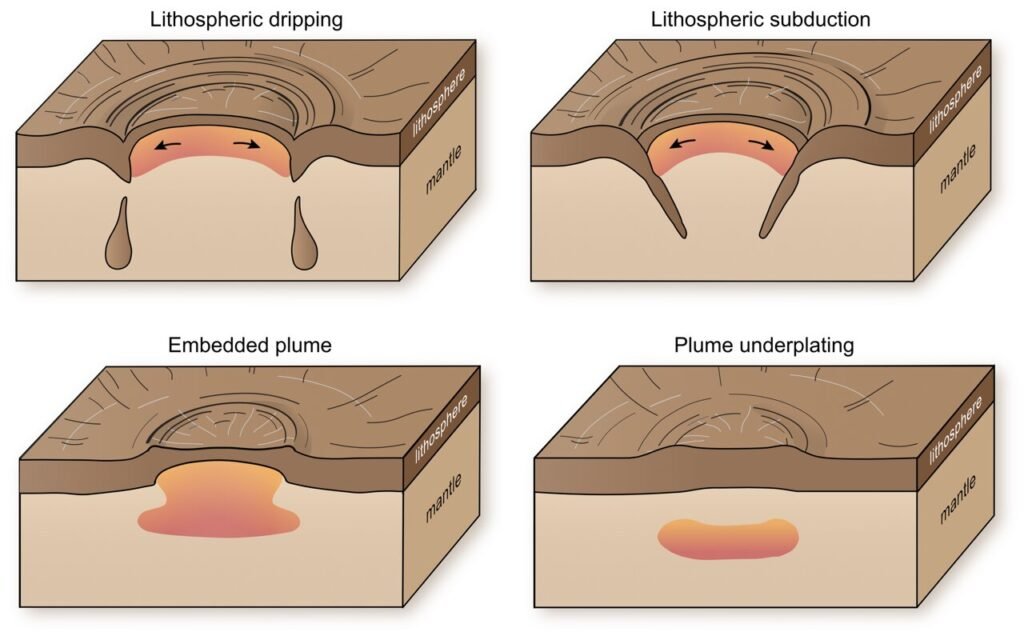
Preparing for VERITAS: A Mission to Unveil Venus’s Hidden Heart
The tantalizing clues unearthed from Magellan’s 30-year-old data are only the beginning. NASA’s upcoming VERITAS mission (Venus Emissivity, Radio Science, InSAR, Topography, and Spectroscopy) is poised to take planetary geology to the next level. Set to launch no earlier than 2031, VERITAS will carry instruments capable of producing 3D maps of Venus’s surface with up to four times the resolution of Magellan’s.
Study co-author Erwan Mazarico, who will co-lead the VERITAS gravity experiment, believes this leap in precision could be transformative. “VERITAS gravity maps of Venus will boost the resolution by at least a factor of two to four—a level of detail that could revolutionize our understanding of Venus’s geology and implications for early Earth,” said Mazarico.
Principal investigator Suzanne Smrekar adds that VERITAS will also deploy a near-infrared spectrometer to determine the planet’s surface composition, and a radar system that can detect changes in surface structure over time.
A Planet Reborn in Data
Magellan may have gone silent long ago, but its legacy continues to shape our understanding of Venus. This recent study is the latest in a wave of discoveries revisiting the decades-old radar data with fresh eyes and new computational tools. Earlier analyses revealed ongoing volcanism, including eruptions from Maat Mons and Sif Mons. These findings dispelled the long-held belief that Venus was geologically inert.
The newly identified tectonic activity around coronae expands this narrative. Not only is Venus volcanically active, but its crust may also be shifting and recycling, albeit in a manner distinct from Earth’s plate tectonics.
“Coronae are abundant on Venus,” noted co-author Anna Gülcher from the University of Bern. “They are very large features, and people have proposed different theories over the years as to how they formed. The most exciting thing for our study is that we can now say there are most likely various and ongoing active processes driving their formation.”
What Venus Can Teach Us About Earth—and Beyond
Studying Venus is not just about understanding a neighboring world—it’s also about understanding our own. The geological processes happening today beneath the planet’s dense clouds may mirror those that shaped Earth billions of years ago. By exploring these similarities, scientists can test theories about planetary formation, thermal evolution, and even the potential for tectonics on exoplanets orbiting distant stars.
Venus, once dismissed as a static world trapped in a volcanic past, is now being reimagined as a dynamic, evolving planet. With every new discovery, it becomes clearer that the second planet from the Sun is far more Earth-like than we ever imagined—not in habitability, but in geologic vitality.
And when VERITAS finally embarks on its mission to pierce the clouds of Venus once more, we may find that the story written on its surface is not only still unfolding—but intimately connected to the ancient past of our own world.
Reference: Gael Cascioli, A spectrum of tectonic processes at coronae on Venus revealed by gravity and topography, Science Advances (2025). DOI: 10.1126/sciadv.adt5932


